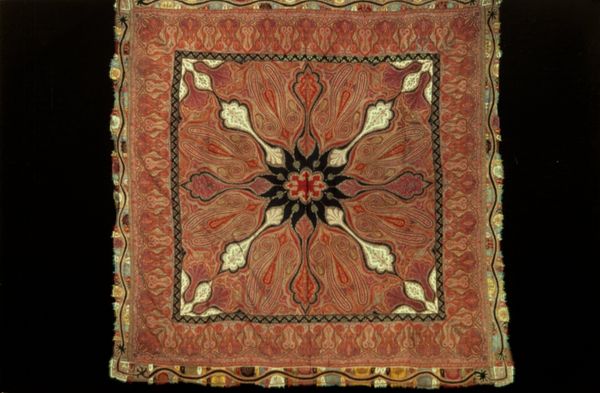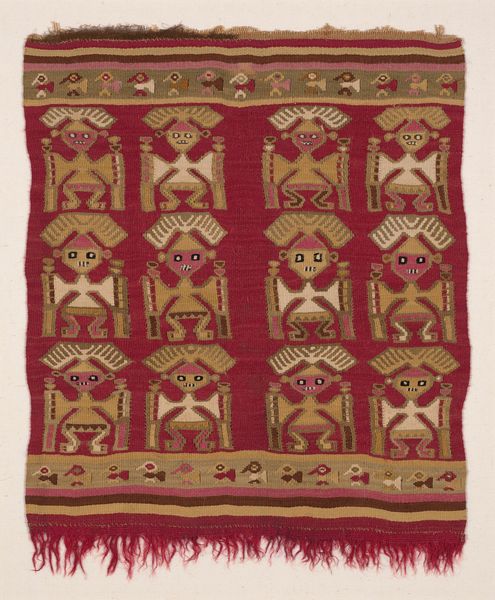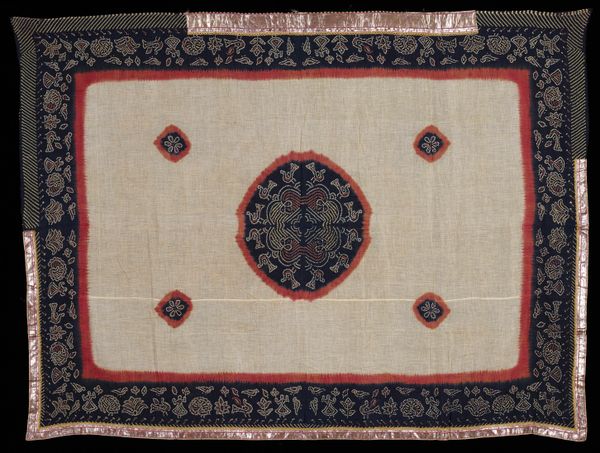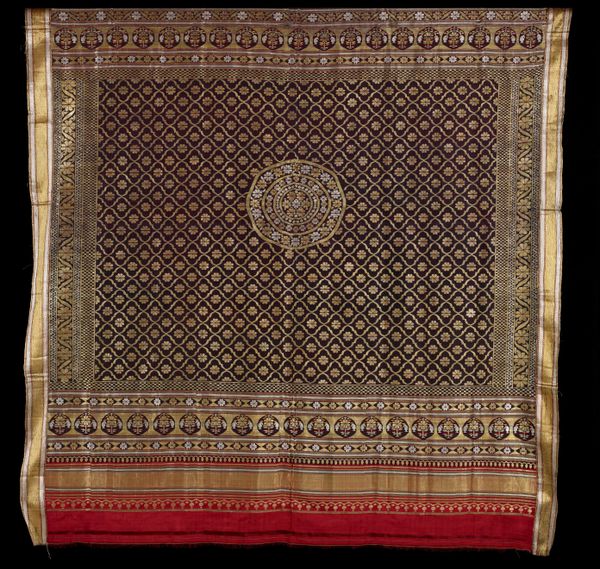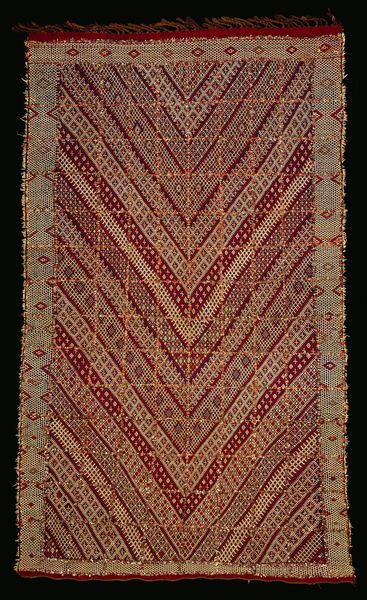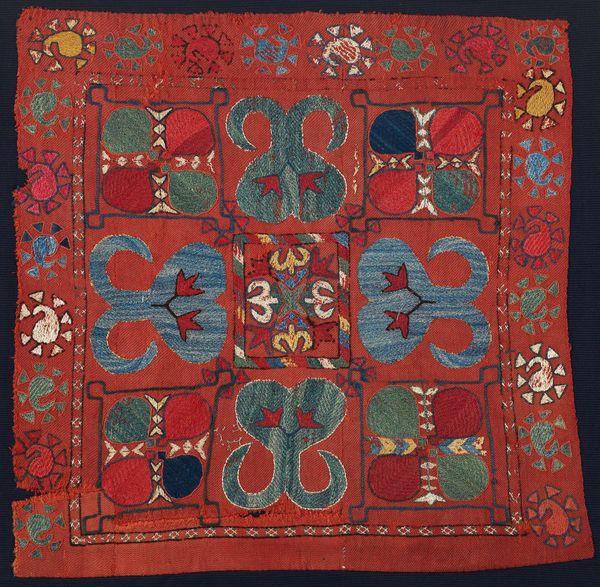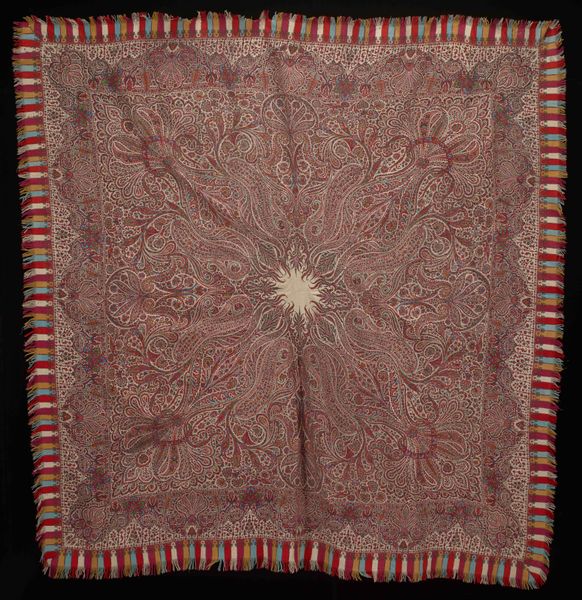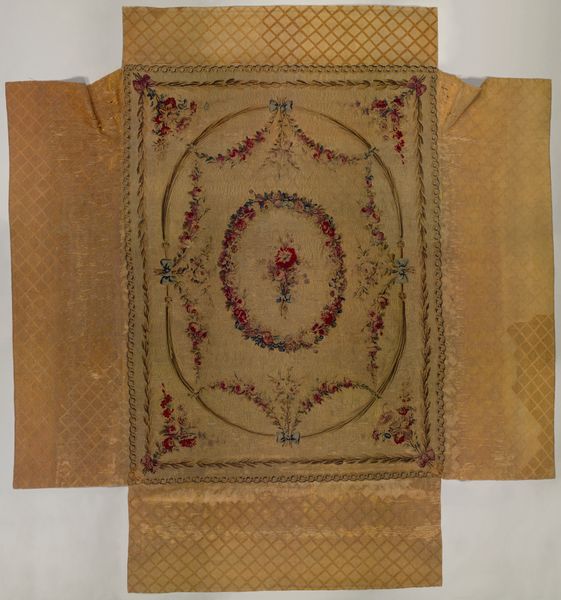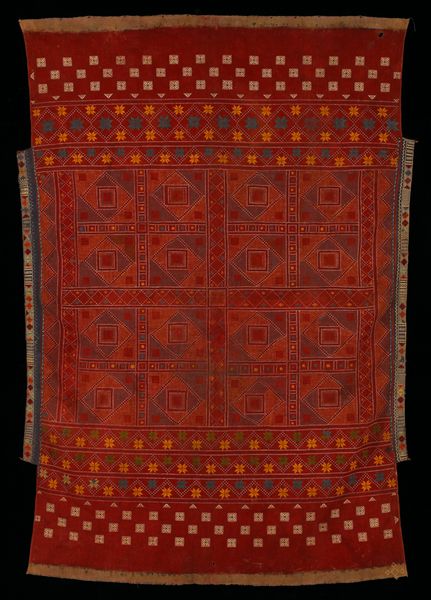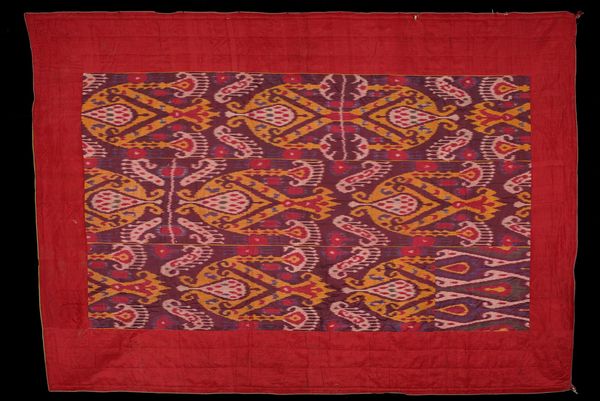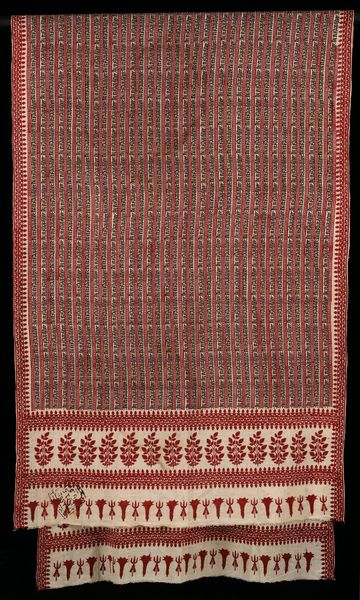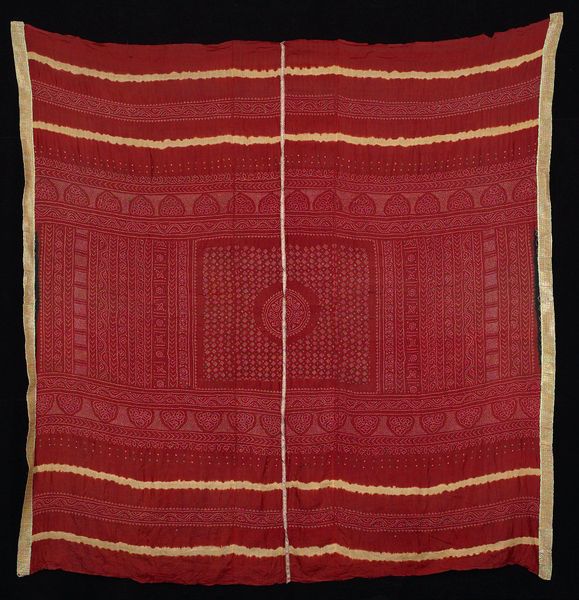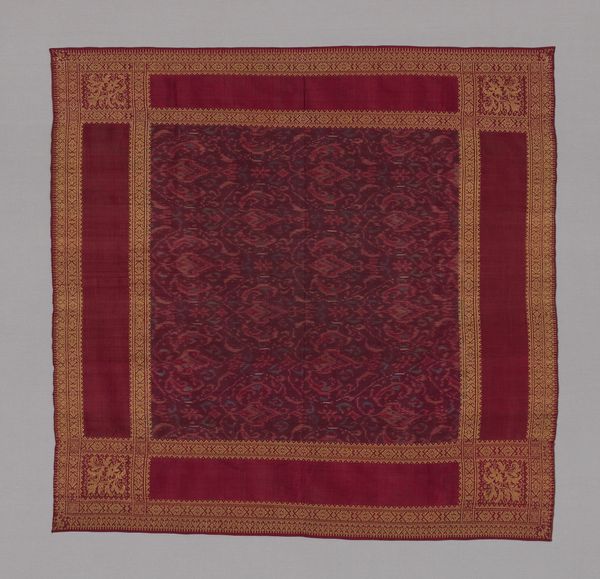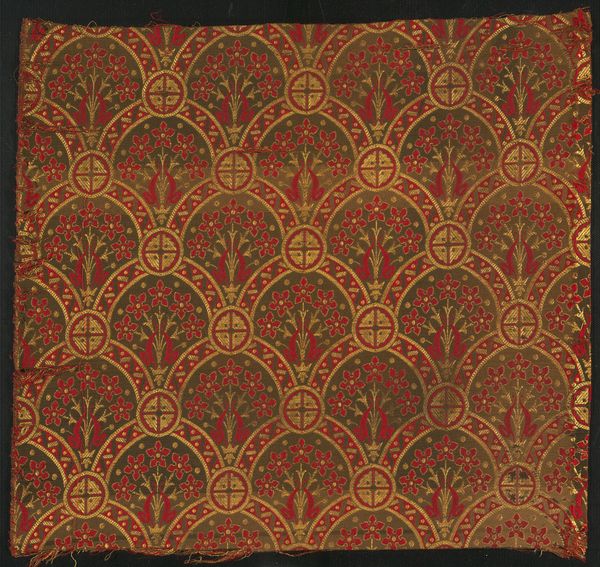
textile, cotton
#
pattern
#
asian-art
#
textile
#
geometric pattern
#
geometric
#
cotton
#
decorative-art
Dimensions: 89 x 64 in. (226.06 x 162.56 cm)
Copyright: Public Domain
This Inner Wedding Veil, or Patori, was likely made anonymously in India as part of wedding rituals. This textile offers a window into the social and cultural norms surrounding marriage at the time it was made. The imagery on the Patori holds deep meaning. The repeated circular motifs, for instance, might represent wholeness, unity, and eternity. The veil’s red color is culturally significant as a symbol of auspiciousness and prosperity, commonly associated with weddings in India. The geometric patterns and borders add a sense of order and structure, reflecting the social organization of the time. Understanding the Patori requires exploring the cultural history of Indian wedding traditions, the role of women in society, and the economics of textile production. By studying historical accounts, ethnographic studies, and textile analysis, we can appreciate how this veil both reflects and reinforces the cultural values of its time. Its preservation in a museum like Mia allows us to contemplate the intricate relationship between art, society, and history.
Comments
minneapolisinstituteofart almost 2 years ago
⋮
Muslim brides in the Banni district of Kutch wore layers of veils. Hidden from view, like the bride herself, was a red and green, lotus-patterned cloth called patori. The finest patoris were done in tie-dye, for which Kutch was famous. Printed versions mimicking tie-dye were also popular.
Join the conversation
Join millions of artists and users on Artera today and experience the ultimate creative platform.
